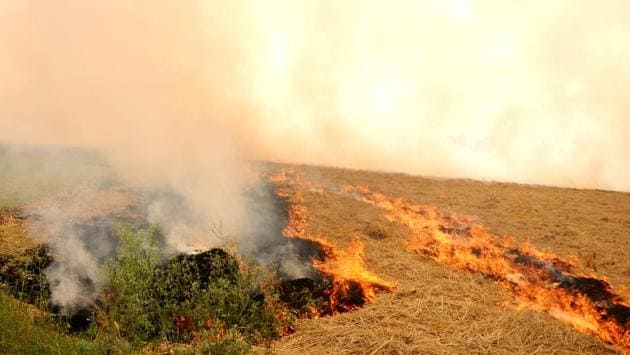No cost-effective alternative to manage crop waste, say Haryana farmers
Farmers in Haryana say setting their fields on fire was the best and cheapest way to get rid of tonnes of paddy straw (15 quintals per acre)
Repeated warnings, registration of FIRs, setting up of custom hiring centres and awareness campaigns are no deterrent for farmers in Haryana who say they have no other option but to burn paddy stubble owing to lack of technology for its management and no cash incentive to dispose it of scientifically.

Farmers say setting their fields on fire was the best and cheapest way to get rid of tonnes of paddy straw (15 quintals per acre). “Burning paddy straw costs nothing and it is the quickest and cheapest solution to get rid of crop waste,” says an elderly farmer of Karnal’s Ramba village. The machines provided by the government to manage paddy stubble are beyond the reach of marginal farmers as they have to incur an additional expenditure of ₹1,500 to ₹2,000 per acre, he says.
COMBINE HARVESTERS ROOT CAUSE OF MENACE
Combine harvesters without straw management system are the root cause of stubble burning. Farmers say the practice of burning crop waste started when combines were introduced. Stubble burning was not a problem in areas where crop was harvested manually. “It is difficult to manage the crop waste left by combine harvesters sans straw management system. Farmers prefer traditional harvesters as they have to shell out ₹500 to ₹1,000 extra for machines with straw management system, says Sandeep Kumar, owner of a combine harvester from Karnal.
Nearly 50% of the paddy produced in the state is harvested by combines and most of these do not have straw management system. “The harvesting cost of combines with straw management system is above ₹2,000 per acre. The government should ensure that the all harvesters install straw management system without changing extra from farmers,” said Rishi Pal, a farmer from Sikri.
Senior official of the Haryana agriculture department Pawan Sharma said: “There is no problem with the new combine harvesters but the installation of straw management system in old machines remains a challenge even though the government was providing direct subsidy for it.”
FALLING BASMATI PRICES
Farmers also blame the fall in prices of basmati varieties for stubble burning as they said that area under the basmati has decreased. “Basmati is harvested manually but most of the other varieties are harvested with combines. Most cases of stubble burning are being reported from areas were non-basmati varieties are cultivated,” said Pradeep Meel, deputy director, agriculture.
INCENTIVISE MARGINAL FARMERS
Agriculture experts also blame poor government policy for failure to check farm fires. Every year, the government announces subsidies and launches awareness drives but to no avail. The subsidised machines provided by the government for the management of crop waste fail to attract small farmers as they don’t find it economical, they say.
“The government should also provide subsidies to small farmers for manual harvesting and also promote cultivation of basmati varieties instead of increasing the MSPs of other varieties,” says an official of the agriculture department.






